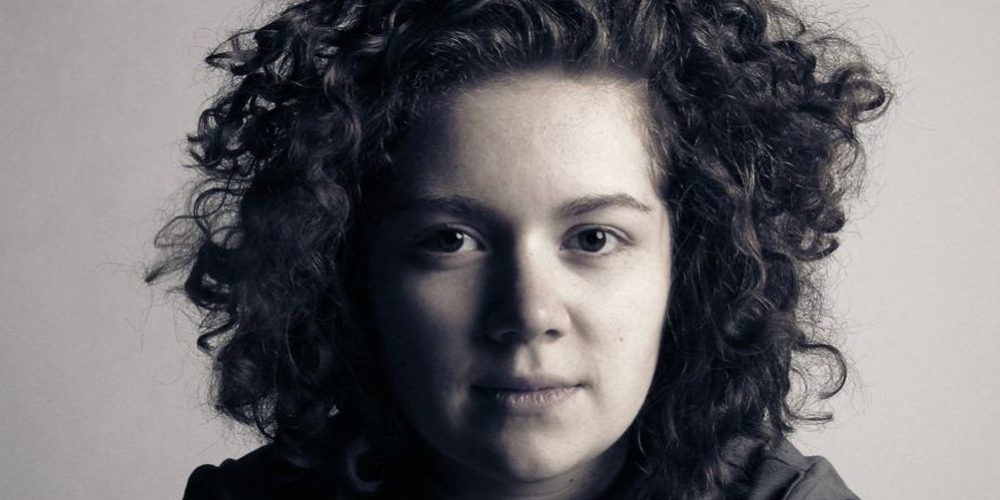
Alex Schaufele joins PCA&D as the new Director of Exhibitions
Thursday, July 1st, 2021
Alex Schaufele’s long experience of tying gallery and community together, and using museums to engage and educate, takes another step July 1 when she joins Pennsylvania College of Art & Design as the Director of Exhibitions.
Arriving from the University of Notre Dame’s Snite Museum of Art, where she was Assistant Curator of Education, Public Programs, Schaufele is eager to dig into the work at PCA&D — collaborating with both students and artists — and to continue expanding what’s possible for the PCA&D institution as a whole.
She’s looking forward to the possibilities for embedding the gallery space into PCA&D’s curriculum, and for transforming it into a space that links exhibitions to expanded public programming.
And she’s drawn to initiatives such as CORE Gallery, the College’s student-led exhibition space which opened in Spring 2020.
“It’s a fantastic opportunity for students that I wish I’d had as a student,” Schaufele says. “Being able to really play with what it means to plan, curate, install, and promote an exhibition is such a valuable experience for any emerging artist.”
You’ve worked at a large university (Notre Dame) as well as a small liberal arts college (Adrian College in Michigan) — what do you see as benefits of a small college community like PCA&D ?
AS: Small college communities are much more connected than is possible at a large institution. Students, faculty, and staff are more intimately connected to one another as well as having more direct ties to the surrounding communities. For these reasons, and because of their much smaller size, they’re very nimble and able to respond to peoples’ needs quickly and adapt to those needs efficiently.
What attracted you to this position?
AS: While I genuinely enjoyed my previous role as a museum educator, I’ve been missing the opportunities a gallery brings for working closely with artists. I was also really drawn to how intimate PCA&D is in terms of size and the opportunities it presents for working with students and the larger Lancaster community.
What would you ideally like the Main Gallery’s role to be at PCA&D?
AS: Ideally, I want it to become a hub for students and the community to see artwork and to meet one another. The Gallery shouldn’t be an intermittent experience that is only active for the exhibition receptions. I envision it being used with different courses to explore themes or techniques, for students and student groups to incorporate the space for programs, and I see it hosting programs like readings or workshops linked to the exhibitions that also include the larger community.
You have a great deal of experience in building those relationships within the surrounding community. Can you describe the potential in more detail?
AS: Previously I’ve developed those relationships through programming — think pubic events that are both small like poetry readings to larger events like printmaking workshops accompanied by a temporary exhibition — and through working with schools or community groups to tailor a visit to the space that meets them where their needs are. There’s potential here at PCA&D for similar local and regional partnerships to develop in a way that really highlights how wonderful a resource PCA&D is here in Lancaster.
Does operating the gallery for an art and design school bring special opportunities?
AS: It does. Art and design schools, especially smaller institutions, have so many opportunities to really connect students with other artists who are currently working both in their cohort and beyond. The PCA&D Gallery is situated so students could literally walk through it every day to get to their classes. That level of access means students can engage with the work as actively or passively as they like, even if the work on view is outside of their aesthetic or conceptual interests.
Where do you see other opportunities to expand the gallery’s impact — both internally and externally within the larger community?
AS: I see so many places for collaboration. I’d love to work with faculty to curate exhibitions and to mentor students interested in pursuing arts management or gallery work. Externally, the Gallery can act as a bridge for PCA&D to really connect with the community, not just through exhibitions but through partnerships. For example, working with the library to develop art and story walking paths or taking guest artists to visit and lead short workshops at other area locations.
What artist(s) inspire you?
AS: This is a difficult question to answer because there are so many incredible artists. I’ve always adored Ann Hamilton‘s work. I also enjoy work by Ishiuchi Miyako, Marie Yoho Dorsey, Michael Menchaca, Mary Tremonte, and more.
Do you create art of your own? If so, what is your focus:
AS: I’m not currently practicing, but my background is in fibers and conceptual installation. My work used to be about time, memory, and the places those hold in our lives through using fibers—textile making and embellishment techniques like weaving, sewing, dyeing, etc.
